Sulfide-ore mining for copper, nickel and other metals in the United States has a flawless environmental record—meaning that a perfect 14-of-14 operating mines (representing 89 percent of U.S. copper production) were found to have released toxic contaminants via accidental releases such as pipeline failures, tailings dam spills, water treatment failures and seepage into groundwater supply.
When sulfide ore is exposed to air and water, it forms sulfuric acid, which leaches from the earth such poisons as mercury, lead and arsenic. This nasty cocktail is called acid-mine drainage. It damages humans and trashes aquatic and terrestrial food chains, killing or evicting invertebrates, fish, amphibians, reptiles, piscivorous birds and piscivorous mammals. In small streams, acid-mine drainage can sometimes be neutralized with crushed limestone. In sprawling, interconnected lakes, that’s impossible.
Now pause for a moment and see if you can name one of the worst possible sites in North America for a sulfide-ore mine.
If you selected the headwaters of the Boundary Waters Canoe Area Wilderness (BWCAW) in Minnesota, you’d be correct. At 1.1 million acres the BWCAW is one of America’s biggest and most popular wilderness areas — a fish-filled inland sea dotted with wildlife-rich islands, stretching along 150 miles of international border. There are at least 1,100 lakes (not counting those under 10 acres), all cradled in Canadian-shield granite. Thanks to this surrounding geology, BWCAW waters are very low in dissolved solids—most notably carbonates which help water bodies buffer against acidic intrusions. This makes these boundary waters extremely high quality, but also particularly vulnerable to acidification from mine drainage.
What’s more, it’s connected to waters of Quetico Provincial Park and Voyageurs National Park. Loons, eagles, ospreys, moose, wolves, black bears, otters, beavers and lynx abound in the BWCAW. Its waters are among the cleanest in the U.S. and provide world-class angling.
“The fishing is just phenomenal,” reports Lukas Leaf, former BWCAW guide and current Executive Director of the 15,000-member Sportsmen for the Boundary Waters. “When I was twelve my dad started taking me in for the lake-trout opener. In spring it’s great for northern pike and walleyes. Later in spring there’s amazing top-water action for smallmouth bass. In summer we target lake trout deeper down; in fall more walleyes; and winter is huge for lake trout.”
There are also brook trout, muskellunge, sauger, crappies, bluegills, green sunfish, longear sunfish, pumpkinseeds, largemouth bass, rock bass, lake whitefish, cisco, burbot and yellow perch.
Near Birch Lake — the highest elevation point in this 2-million acre, three-sanctuary watershed —Twin Metals Minnesota plans a sulfide-ore mine on the 75,000 acres it controls. Just the first phase would require razing two square miles of Superior National Forest, cutting access roads and hacking a ten-mile-long, 150-foot-wide transmission corridor across streams and wetlands. So low is the ore’s copper/nickel content that that 99 percent of 18,000 tons of rock daily processed will wind up as toxic tailings, stacked high and forever on at least 9 (possibly 18) square miles. Much of what metals are recovered will be shipped abroad.
Twin Metals is a shell company of Antofagasta, a Chilean mining giant with a voluminous record of environmental abuse and misconduct. Chile’s Supreme Court found it guilty of harming citizens by polluting groundwater. It’s the leading toxic polluter in Chile’s Coquimbo region, and it has been implicated in sundry bribery and tax-fraud scandals.
I fell in love with the BWCAW in 1996 when researching the Wise Use Movement’s attempted assault on wilderness. I’m not sure I can still carry a 17-foot canoe from Moose Lake to Wind Lake. That portage is probably under a mile, but even then it felt like two.
Dea Whitten of Conservationists With Common Sense, a shrill Wise Use outfit agitating for motorized use throughout the BWCAW, informed me that “preservationists” like me were discriminating against disabled folks like her. For much of nine months she’d been “disabled” by pregnancy, she explained. So she’d had a “horrible experience” in the BWCAW.
Having assisted my wife in natural childbirth, I know pregnancy is difficult, but I’ll venture less so than cerebral palsy. Janet Peterson of St. Paul, born with the disease, had long dreamed of visiting the BWCAW but assumed it was impossible. Then she heard about a group called Wilderness Inquiry that provides such opportunities for the disabled. The trip was the high point in her hard life. She had difficulty speaking so I asked her to answer my questions in writing. Would she like to have Congress arrange for people like her to be motored into places like the BWCAW? “I would rather stay home than think I’d be contributing to the loss of wilderness,” she wrote. “We’re only visitors to wilderness, and we should adapt to it, rather than wilderness adapting to us.”

Today the shouting issues not from Wise Users but their siblings under the skin who want the wilderness to adapt to their toxic industry.
“We have a very divided community,” said Becky Rom who chairs the Campaign to Save the Boundary Waters. The thinking is you’re either for the mining industry or against it. There’s no analysis of whether or not the Boundary Waters is the right place for a sulfide-ore mine and no understanding that there will be ten jobs lost for every one gained. A rational discussion doesn’t exist.”
Still, polls show that most Minnesotans oppose the mine. Nowhere is opposition stronger than in Ely, jumping off point for the BWCAW. The wilderness sustains 250 local businesses, among them “Ravenwood,” the 110-acre “nature studio” of the great wildlife photographer Jim Brandenburg. It’s a product of his financial success which, in turn, is a product of BWCAW wildlife. In fact, a wolf “built” Brandenburg’s cabin, as he likes to say. That’s the wolf, head half-obscured by a tree, whose green eye drills you in maybe the most famous wildlife photo ever made.
Under a brilliant night sky undefiled by ambient light Brandenburg and I sat on a Ravenwood hill where he taught me to speak wolf. Our howls were answered from all compass points. “If a country is wild enough for wolves, then it is wild enough for the human spirit,” wrote Brandenburg in his book “Brother Wolf.”
A rational discussion did exist within the Obama administration. In December 2016, the Bureau of Land Management, which handles mineral leasing, declined to renew Twin Metals’ two expired leases based on the following statement by then Forest Service Chief Tom Tidwell: “I find unacceptable the inherent potential risk that development of a regionally-untested coper-nickel sulfide-ore mine within the same watershed as the BWCAW might cause serious and irreplaceable harm to this unique, iconic and irreplaceable wilderness area. Therefore, the Forest Service does not consent to renewal of Preference Right leases.”
The Obama administration launched an environmental assessment to determine benefits of a 20-year mining ban on lands bordering the BWCAW.
No sooner had Trump taken office than Antofagasta began aggressively lobbying his administration for renewal of its shell company’s leases.
Daniel Jorjani, ensconced by Trump as Interior’s top lawyer, defied half a century of legal interpretation by hatching a legal opinion that the decision of Obama’s BLM’s had been unlawful, thereby renewing Twin Metal’s leases.
Sonny Perdue, Trump’s Secretary of Agriculture and in charge of the environmental assessment for the proposed 20-year mining ban, had assured Congress that it would “absolutely” be finished and that no decision would be made prior to its conclusion. But pressured by the White House, Perdue cancelled the assessment and concealed findings from the public by blacking out 60 pages —this despite the fact that 94 percent of 125,000 public comments urged protection of the BWCAW.
Increasing the threat to the BWCAW is the Trump administration’s emasculation of critical environmental regulations. For example, its repeal of the Clean Water Rule removed protection from about half America’s wetlands and headwaters which filter pollution, recharge groundwater, maintain navigable waterways and provide thermal refuge and spawning habitat for fish. The notion that wetlands and headwaters can be fouled with no downstream consequence makes as much a sense as assigning peeing sections in public swimming pools.
Before and after BWCAW’s official designation 42 years ago, extended, vicious battles between special interests and wilderness interests resulted in compromises.
In the 1940s Ely was the continent’s largest float-plane base. Anglers would canoe three days into the wilderness, and before they could set up their rods float planes would land and disgorge anglers with different mindsets. It got so bad that President Truman prohibited commercial aircraft below 4,000 feet, a regulation still in place. This infuriated access and extraction advocates who, by way of compromise, demanded and received exceptions to the 1964 Wilderness Act that grandfathered existing motorboat use and logging.
In the 1970s Rep. Jim Oberstar (D-MN), who attempted to open 400,000 acres of the BWCAW to logging and motorboats, clashed with Rep. Don Fraser (D-MN) who fought for wilderness values. From that battle emerged the Boundary Waters Canoe Area Wilderness Act of 1978, a compromise that banned logging and mining inside the BWCAW, prohibited mining in 220,000 acres of national forest lands along three entry roads, but permitted motorized use so that today motorboats are allowed on about 22 percent of the water.
When I got involved in the 90s the Wise Use Movement had fanned up old bitterness about the 1978 legislation. Oberstar and Sen. Rod Grams (R-MN) tried to put the BWCAW and Voyageurs National Park under local control, increase motorized use 50 percent and put trucks back on three portages. Out of that conflict came yet another compromise—a bill by Rep. Bruce Vento (D-MN) in which two truck portages were reinstated and motors taken off two lakes.
“The difference now,” Becky Rom told me, “is that there’s no compromise with a sulfide-ore mine. You can’t have half a mine. You’ve got it or you don’t. The mine would be far more destructive than any threat we’ve faced before. There’s huge potential for damage to ecosystem and landscape. That’s based on science and the performance record of sulfide-ore mines everywhere.”

There’s hope, though. For once, hunters, anglers and enviros have formed an alliance. Among the most active sportsmen groups are Backcountry Hunters and Anglers, Izaak Walton League, Sportsmen for the Boundary Waters, National Wildlife Federation, Theodore Roosevelt Conservation Partnership, Ruffed Grouse Society, Quality Deer Management Association and American Sportfishing Association.
The sportsmen/enviro political juggernaut is educating the public and pushing legislation, introduced in January by Rep. Betty McCollum (D-MN), that would nix Twin Metals’ plan by banning sulfide mining from 234,000 acres of federal land bordering the BWCAW. At this writing the bill (H.R. 5598) has 45 co-sponsors from 21 states and D.C. Two cosponsors are Republicans.
At Wind Lake I stretched my aching shoulders, inhaled the fragrance of willows and waited for gear-laden Kevin Proescholdt, then director of Friends of the Boundary Waters Wilderness. Dozens of tiger swallowtail butterflies ingested minerals from wet sand. From newly leafed aspens a ruffed grouse drummed. Hermit thrushes caroled around me. Smallmouth bass ghosted over granite. And 50 yards out in the lake a pair of loons cruised low through sparkling waves.
Later, as we paddled over the routes of the Chippewa, Sioux and French voyageurs, I recalled the words of Proescholdt’s late friend—angler, writer, naturalist and hero of this wilderness, Sigurd Olson: “The movement of a canoe is like a reed in the wind. Silence is part of it, and the sounds of lapping water, bird songs, and wind in the trees. It is part of the medium through which it floats, the sky, the water, the shores... The way of a canoe is the way of the wilderness and of the freedom almost forgotten.”
During Congressional hearings on a bill sponsored by Rep. Fraser that would have closed the BWCAW to motorized traffic Olson was hanged in effigy and his testimony interrupted by prolonged boos, jeers and stomping. When the mob was finally gaveled to silence he accurately intoned: “This is the most beautiful lake country on the continent. We can afford to cherish and protect it.”










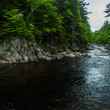



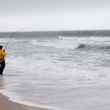
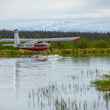




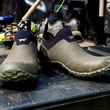



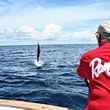
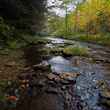




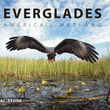
Comments
Larrty Stone replied on Permalink
Excellent piece, Ted. We must fight to protect this jewell from exploitation. I've been visiting the Boundary Waters since 1965. What a travesty it would be to lose it because of politics and financial greed.
Anne Duncan replied on Permalink
I live in Iowa, the most human-altered state in the nation. Small natural areas remain, but all wilderness has been destroyed. That's a major reason why my Iowa friends who regularly visit the Boundary Waters regard that landscape as miraculous. It needs to be saved partly because its very existence is the essence of hope.
Not all of us can spend time fighting for the Waters, but all of us can be grateful to those who do. And all of us can try to elect political candidates who have at least a rudimentary understanding of physical reality and science.
Suzie Gilbert replied on Permalink
I was so glad to read this article. Beautiful description of a place I would love to visit, a heads up that (no surprise) the Trump administration is trying to destroy it, and the cautiously hopeful news that people are rallying to protect it. I hope there will be a follow up!
Richard Laya replied on Permalink
Soon we’ll find out whether this is a moment in time when America tiptoed up to the edge of an environmental catastrophe and turned away to move to long term and rational policies to govern our interaction with this magical wilderness, or do we favor exploiting it to death for a short term profit for already rich men. One thing is certain, the locals who so ardently and vocally support the mine in the name of “jobs,” will not be getting rich as part of the deal. Who will? Ask Ivanka and Jared.
Bragg Williams replied on Permalink
In the summer of 1967 I was one of a group of staff members from Boy Scout Camp Tiak in south Mississippi. After driving and camping out for 3 days on the road, we took a 10 day trip into the Boundary Waters area. It was an adventure of a life time. We paddled over 150 miles from the Charles L Sommers Boy Scout canoe base camp on Moose Lake to Mack Lake in Quetico Provencal Park in Ontario and back. I will always cherish the memories of that trip. For several days we saw no one else. We heard the wind in the trees, loons calling, the splashing of water as we caught another fish, or as it tumbled down one waterfall after another. We didn't hear airplanes overhead, outboard motors, or diesel engines running pumps and mining equipment. Boundary Waters is a treasure to be preserved for future generations to enjoy. If the mine is built, where will the loon call?
Richard Laya replied on Permalink
That’s a great story. Our son in law from NC worked there for several years at that camp on his way on his way to becoming an Eagle Scout. He just finished law school and he and our daughter (also an environmentalist) will be based in Chicago when he starts working for an environmental not for profit, later this summer.
A big part of what they (and so many like them) are now, as adults, was shaped by spending time in wild places like the BWCA. It’s a place that really matters, and not just for the loons. It obviously matters to people too.
Pages